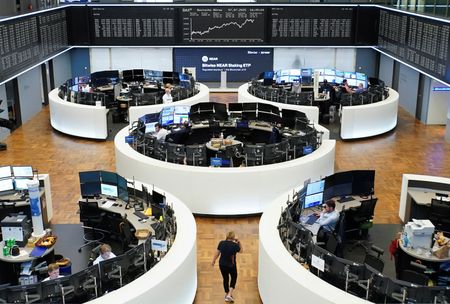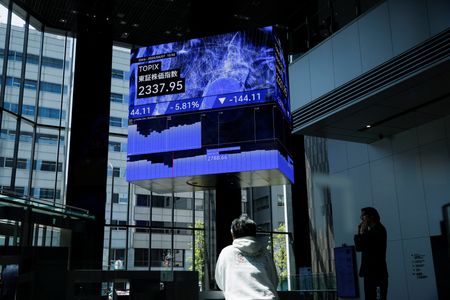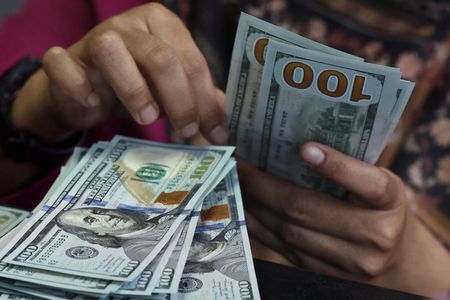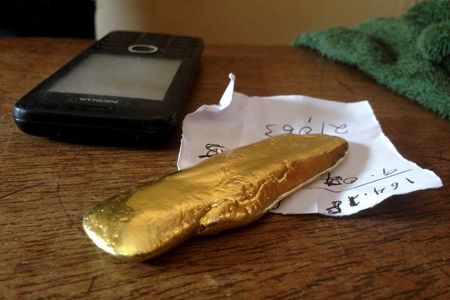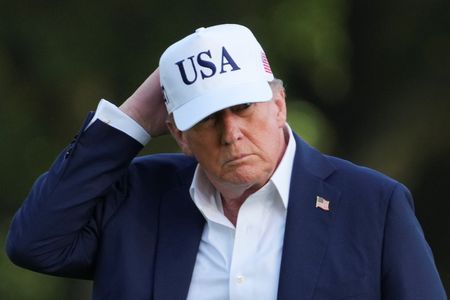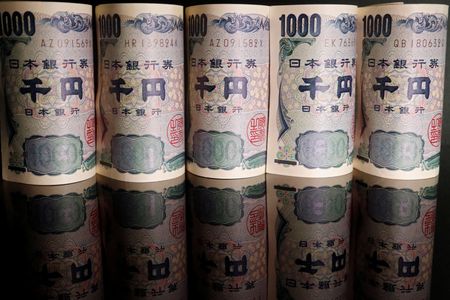By Caroline Valetkevitch
NEW YORK (Reuters) -Major stock indexes mostly inched lower and U.S. copper prices jumped to a record high on Tuesday as U.S. President Donald Trump announced he would impose a 50% tariff on imported copper, broadening his global trade war.
Trump also said levies on semiconductors and pharmaceuticals were coming soon.
U.S. Comex copper futures jumped more than 12% to a record high after Trump announced the planned tariff. The metal is critical to electric vehicles, military hardware, the power grid and many consumer goods. Shares of copper producer Freeport-McMoRan were up 2.5%.
On Monday, Trump sent letters to 14 countries, including major Asian trading partners such as Japan and South Korea, saying they face sharply higher tariffs on imports into the United States starting from a new date of August 1.
European stocks held firm. The U.S. president said trade talks have been going well with the European Union and China but added he was only days away from sending a tariff letter to the EU.
Stocks sold off on Monday but market reactions have not been as severe as in the aftermath of Trump’s sweeping tariff announcement in April.
U.S. stock investors “are kind of on hold until we start seeing second-quarter earnings,” said Peter Tuz, president of Chase Investment Counsel in Charlottesville, Virginia. “This is a calm before the storm.”
S&P 500 companies will soon begin reporting results on the quarter that ended June 30.
BofA Global Research and Goldman Sachs raised their year-end targets for the S&P 500, partly because of resilient corporate earnings.
The Dow Jones Industrial Average fell 165.60 points, or 0.37%, to 44,240.76, the S&P 500 fell 4.46 points, or 0.07%, to 6,225.52 and the Nasdaq Composite rose 5.95 points, or 0.03%, to 20,418.46.
MSCI’s gauge of stocks across the globe fell 0.62 points, or 0.07%, to 919.31. The pan-European STOXX 600 index ended up 0.41%.
The lack of progress on trade has loomed over markets since Trump capped in April what he called reciprocal tariffs with trading partners at 10% for three months to allow for negotiations.
Only two U.S. agreements, with Britain and Vietnam, have been reached, and in June, Washington and China agreed on a framework covering tariff rates.
Minutes from the last Federal Reserve meeting will be released on Wednesday. The central bank has been taking a wait-and-see approach to monetary policy, while investors are anxious for clues on interest rate cuts.
The yen extended its slide against the dollar. The export-dependent Japanese yen was last down 0.32% against the greenback at 146.54. The euro hit a one-year high against the yen and was last up 0.58% at 171.980.
The Australian dollar rose after the country’s central bank defied market expectations and left its cash rate steady at 3.85%.
U.S. Treasury yields also gained, with the yield on benchmark U.S. 10-year notes up 2.2 basis points at 4.417%. It reached 4.435%, the highest level since June 20.
The Treasury saw soft demand for a $58-billion auction of three-year notes on Tuesday. The debt sold at a high yield of 3.891%, around half a basis point above where it traded before the sale. Demand was below average at 2.51 times the amount of debt on offer.
The Treasury will sell $39 billion in 10-year notes on Wednesday and $22 billion in 30-year bonds on Thursday.
Oil prices edged up to a two-week high on forecasts for less U.S. oil production and worries about U.S. tariffs on copper.
U.S. crude rose 40 cents to settle at $68.33 a barrel and Brent settled at $70.15 per barrel, up 57 cents.
Spot gold fell 1.05% to $3,300.32 an ounce.
(Reporting by Caroline Valetkevitch in New York; addditional reporting by Karen Brettell in New York and Rocky Swift and Johann M Cherian; Editing by Sonali Paul, Saad Sayeed, Emelia Sithole-Matarise, Will Dunham and Rod Nickel)



